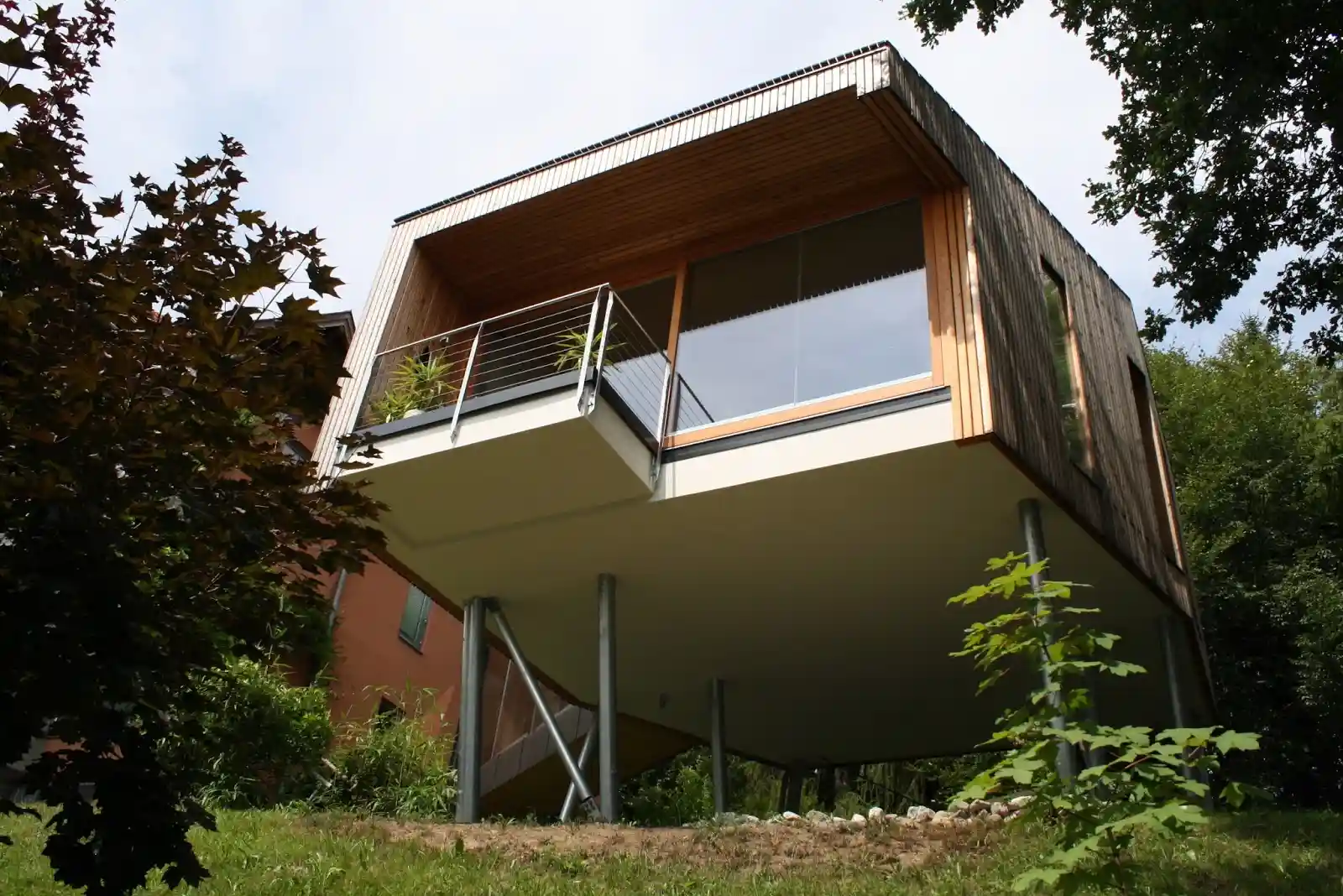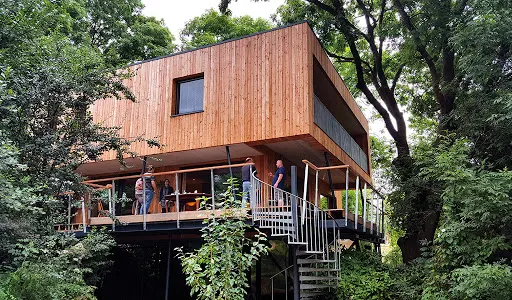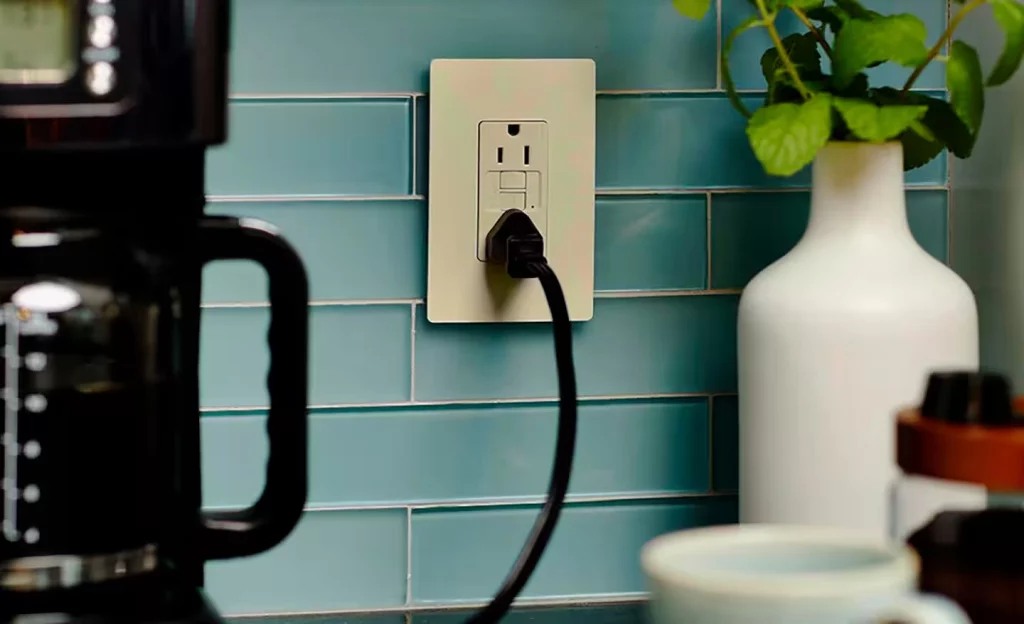The fusion of sustainability and personal health is gaining traction as individuals seek well-being without harming the environment. Sustainable homes offer more than meets the eye, impacting our health and surroundings positively.
Exploring how benefits of sustainable home living enhances the health-conscious homeowner unveils a world where living spaces promote well-being and eco-friendliness seamlessly.
Key Takeaways
- Sustainable homes improve indoor air quality and respiratory health.
- Energy-efficient features in sustainable homes lead to cost savings and reduced carbon emissions.
- Sustainable living practices promote positive mental well-being and physical health.
- Investing in sustainable home living can result in long-term financial benefits and higher property values.
Connection Between Sustainable Living and Health
Sustainable living practices have been increasingly linked to positive health outcomes, showcasing a clear correlation between environmentally conscious choices and improved well-being. Research indicates that individuals who adopt sustainable lifestyles, including living in eco-friendly homes, experience various health benefits. Studies show that sustainable homes, which prioritize energy efficiency and utilize non-toxic materials, contribute to better indoor air quality, reducing the risk of respiratory issues and allergies. Additionally, the incorporation of natural light and ventilation in sustainable homes has been associated with enhanced mental well-being, increased productivity, and better sleep quality.
Furthermore, the use of sustainable building materials decreases exposure to harmful chemicals commonly found in traditional construction materials, leading to a healthier living environment. The emphasis on sustainable practices also encourages physical activity through features like walking and biking paths, green spaces, and community gardens, promoting an active lifestyle and reducing the risk of chronic diseases. Overall, the connection between sustainable living and health is supported by empirical evidence, emphasizing the importance of eco-conscious choices for personal well-being.
Environmental Impact of Sustainable Homes
The ecological footprint of sustainable homes is a critical aspect that underscores their environmental significance and contribution to sustainable living practices. Sustainable homes reduce the negative impact on the environment by incorporating eco-friendly materials, energy-efficient systems, and innovative design strategies.
According to a study by the U.S. Green Building Council, sustainable homes can decrease water usage by up to 50% and reduce energy consumption by 20-30% compared to traditional homes. Additionally, sustainable homes often integrate renewable energy sources like solar panels, further diminishing their carbon footprint.
Moreover, sustainable homes prioritize waste reduction through the use of recycled materials and efficient waste management systems. This approach not only minimizes the amount of waste that ends up in landfills but also promotes a circular economy model. Sustainable homes also contribute to preserving natural resources by utilizing sustainable building practices that prioritize conservation and long-term environmental health.
Health Benefits of Sustainable Home Living
Living in environmentally conscious homes has been linked to various health benefits that stem from the integration of sustainable practices. Studies have shown that sustainable homes, equipped with features such as improved air quality systems, non-toxic building materials, and natural lighting, contribute significantly to the well-being of their inhabitants. Enhanced air quality, a hallmark of sustainable homes, helps reduce respiratory issues and allergies due to proper ventilation and filtration systems, creating an environment that supports lung health and overall vitality.
Furthermore, the use of non-toxic building materials in sustainable homes minimizes exposure to harmful chemicals such as volatile organic compounds (VOCs), which are known to cause a range of health problems from respiratory issues to more severe conditions like cancer. The presence of natural lighting not only reduces the reliance on artificial lighting but also has positive effects on mood, productivity, and the regulation of circadian rhythms, leading to better sleep quality and overall mental health.

Energy Efficiency in Sustainable Homes
With a focus on optimizing resource consumption and reducing environmental impact, energy efficiency stands as a cornerstone of sustainable home design. Energy-efficient features not only contribute to a greener planet but also offer numerous benefits to homeowners. Here are some key advantages:
- Cost Savings: Energy-efficient appliances, lighting, and insulation can significantly reduce utility bills over time.
- Improved Comfort: Proper insulation and ventilation in energy-efficient homes help maintain consistent indoor temperatures, enhancing comfort levels.
- Environmental Impact: Lower energy consumption leads to reduced carbon emissions, promoting a healthier environment.
- Resale Value: Energy-efficient homes are increasingly sought after in the real estate market, potentially increasing property value.
Cost Savings Through Sustainable Living
Energy efficiency in sustainable homes not only contributes to environmental conservation but also plays a pivotal role in achieving significant cost savings for homeowners. Sustainable homes are designed with energy-efficient features such as solar panels, high-quality insulation, energy-efficient appliances, and smart home technology that can significantly reduce energy consumption. According to a study by the U.S. Department of Energy, energy-efficient homes can save homeowners an average of $2,200 per year on energy costs compared to traditional homes.
Moreover, sustainable homes often incorporate water-saving fixtures and systems that reduce water consumption, leading to additional cost savings on water bills. A report by the Environmental Protection Agency states that sustainable homes can save up to 50,000 gallons of water per year compared to conventional homes.
In addition to direct cost savings on energy and water bills, sustainable homes have been shown to have higher property values and lower maintenance costs over time. Investing in sustainable features not only benefits the environment but also provides long-term financial advantages for health-conscious homeowners looking to reduce their ecological footprint while saving money.
Tips for Transitioning to Sustainable Home Living
Transitioning to sustainable home living requires a strategic approach to incorporating eco-friendly practices and technologies into everyday household routines. To smoothly make the shift towards a more sustainable lifestyle, consider the following tips:
- Conduct an Energy Audit: Start by assessing your home’s energy consumption to identify areas where you can improve efficiency and reduce waste.
- Implement Water-Saving Fixtures: Switching to low-flow faucets, showerheads, and toilets can significantly decrease water usage in your household.
- Reduce, Reuse, Recycle: Embrace the mantra of the three Rs by minimizing waste, repurposing items, and actively participating in recycling programs.
- Invest in Renewable Energy Sources: Explore options such as solar panels or wind turbines to generate clean energy for your home while reducing dependence on fossil fuels.
Frequently Asked Questions
How Does Sustainable Home Living Contribute to Overall Well-Being?
Sustainable home living enhances overall well-being through improved indoor air quality, reduced exposure to harmful chemicals, and increased connection to nature. These elements promote physical health, mental clarity, and emotional balance, contributing to a holistic sense of wellness.
What Are Some Lesser-Known Environmental Benefits of Sustainable Homes?
Sustainable homes offer lesser-known environmental benefits such as reducing urban heat island effect, promoting biodiversity, and minimizing light pollution. These eco-friendly practices contribute to a healthier planet and create a more sustainable living environment for all.
Can Sustainable Home Living Improve Indoor Air Quality and Reduce Allergies?
Sustainable home living can significantly enhance indoor air quality by reducing allergens and pollutants. Implementing eco-friendly materials, proper ventilation, and air purification systems can create a healthier environment, reducing allergy triggers and promoting overall well-being.
How Do Energy-Efficient Features in Sustainable Homes Impact Daily Living?
Energy-efficient features in sustainable homes enhance daily living by reducing utility costs, promoting environmental stewardship, and fostering comfort. Technologies like solar panels, efficient appliances, and insulation not only save money but also contribute to a healthier planet.
Are There Any Unexpected Ways That Transitioning to Sustainable Home Living Can Save Money in the Long Run?
Transitioning to sustainable home living can offer unexpected long-term savings through reduced energy costs, lower maintenance expenses due to durable eco-friendly materials, and potential tax incentives or rebates for sustainable upgrades. Sustainable choices align with financial prudence.
Conclusion
In conclusion, the integration of sustainable practices in home living not only benefits the environment but also promotes the health and well-being of individuals. Through eco-friendly design, energy efficiency, and mindful consumption, sustainable homes offer improved indoor air quality, reduced carbon footprint, and cost savings. Transitioning to sustainable home living is a crucial lifestyle choice for health-conscious individuals seeking to create a healthier living environment while contributing to environmental sustainability.
You may also like to read:
Ultimate Guide to Home Renovations for Better Indoor Health





